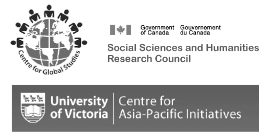Tomoshibi: The Bus Trip to Canadian Internment Sites
By Ava Sakura – Originally published on Discover Nikkei
For Japanese Canadians born and raised outside of British Columbia, tracing their family history can be daunting. Custodian files, oral histories, and, of course, the task of physically going to the West Coast; there’s a lot of literal and metaphorical ground to cover when learning about Nikkei history in Canada.
I should know. I’m Gosei, or fifth generation, and haven’t been further west than the Detroit border. The idea of packing up for a trip to the other side of the continent and searching for clues about my heritage is overwhelming, to say the very least—and not to mention, lonely. I don’t know anyone out on the West Coast, never mind anyone Japanese Canadian. Folks had told me about things like bus tours and memorial sites in passing, but it was always a “you should go!” and never a “here’s what it’s like.”
I had that issue miraculously solved on July 12th when I virtually attended a panel of individuals who’d experienced the Tomoshibi Bus Tour. A joint effort between JANM, the Nikkei National Museum and Cultural Centre, and Past Wrongs, Future Choices, the panelists were four Nikkei from Canada, America, and Australia who’d been on the tour. Even though all four of them were different from me in age, profession, and hometown, I related to their initial feelings about the tour despite having never gone myself.
The panelist I related to the most happened to be one who lived near my hometown. Catherine Oikawa, a Yonsei teacher from Durham, Ontario, shared many feelings I had about the tour: part of Ontario’s Japanese Canadian community but nervous about her lack of knowledge. Of course, she went on the tour anyway.
What made me especially hopeful, though, was how she spoke about the immediate connection with the others on the bus, whether it be through piecing together who’s related to who or trading family stories. She and the other panelist from Ontario, Les Takahashi, both discussed the community and passing of knowledge between generations.
Knowledge sharing was a huge part of the experience for all four panelists, even if it wasn’t verbal. The visceral feeling of upset in the air at historically heavy sites, the sharing of food while on the road, the exhaustion of traveling so far in so little time—participants weren’t silently shuttled from difficult place to difficult place.
The act of traveling itself is part of the trip, as another panelist, Dr. Emily Anderson, touched on: “To go to a place, to travel there… You get a sense of the journey, the experience, the feelings.”
Dr. Anderson (like many Nikkei) had the book version of Japanese Canadian history before the tour, and the emotions, connections and first-person narratives after it. That is, at least for me, all I could hope for when trying to understand my family’s past. Catherine described the experience perfectly (and much more succinctly than myself), simply saying, “It’s a gift.”
Although the panel certainly confirmed my interest in the bus tour, it also made me realize how useful it is for individuals who aren’t Nikkei, whether it be students, teachers, or the general public. Canada’s public history education is lacking in many areas, and Tomoshibi fills some of those gaps with something tangible, interesting, and maybe even life-changing. Their partnership with Past Wrongs, Future Choices means the bus tours will be accessible to more individuals, and the stories of internment and the Japanese Canadian spirit will fly further than before.
Hopefully, I get to experience it myself sometime soon.
* * * * *
Watch “Routes of Remembrance: A Panel Discussion of the Tomoshibi 灯 Journey Bus Tour to Sites of Japanese Canadian Confinement” on July 12, 2025
Book Talk—The Japanese Canadian Movement: Losses and Gains in Translation
Scholars Masumi Izumi of Doshisha University and Emily Anderson of the Japanese American National Museum spoke about the challenges of language and of vastly different audiences in telling Japanese Canadian history on both sides of the Pacific. The two have worked to translate into English Izumi’s sweeping history of Japanese Canadian experience—the most exhaustive study in this area to date—into English. What is gained, and what lost, in translation?
This program, introduced by Jordan Stanger-Ross of Past Wrongs, Future Choices (PWFC), was presented on July 12, 2025 at the Nikkei National Museum and Cultural Centre. It was presented by PWFC and Discover Nikkei as part of JANM on the Go, the the Japanese American National Museum’s lively schedule of special exhibitions, public programs, family festivals, education programs, and more on the JANM campus, throughout Little Tokyo, the greater Los Angeles area, Southern California, and across the US and Japan. Learn more: https://www.janm.org/onthego



 Instagram
Instagram